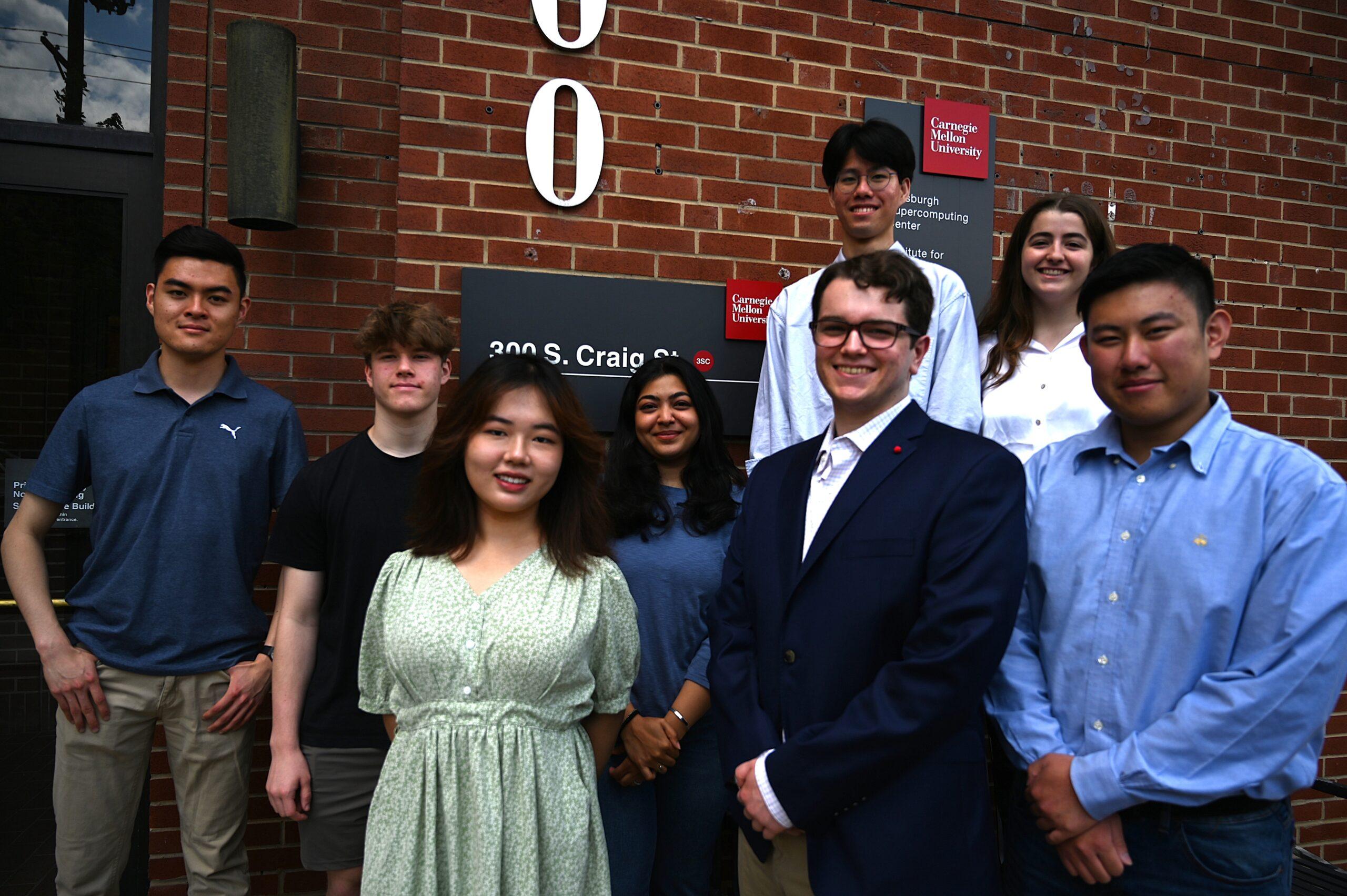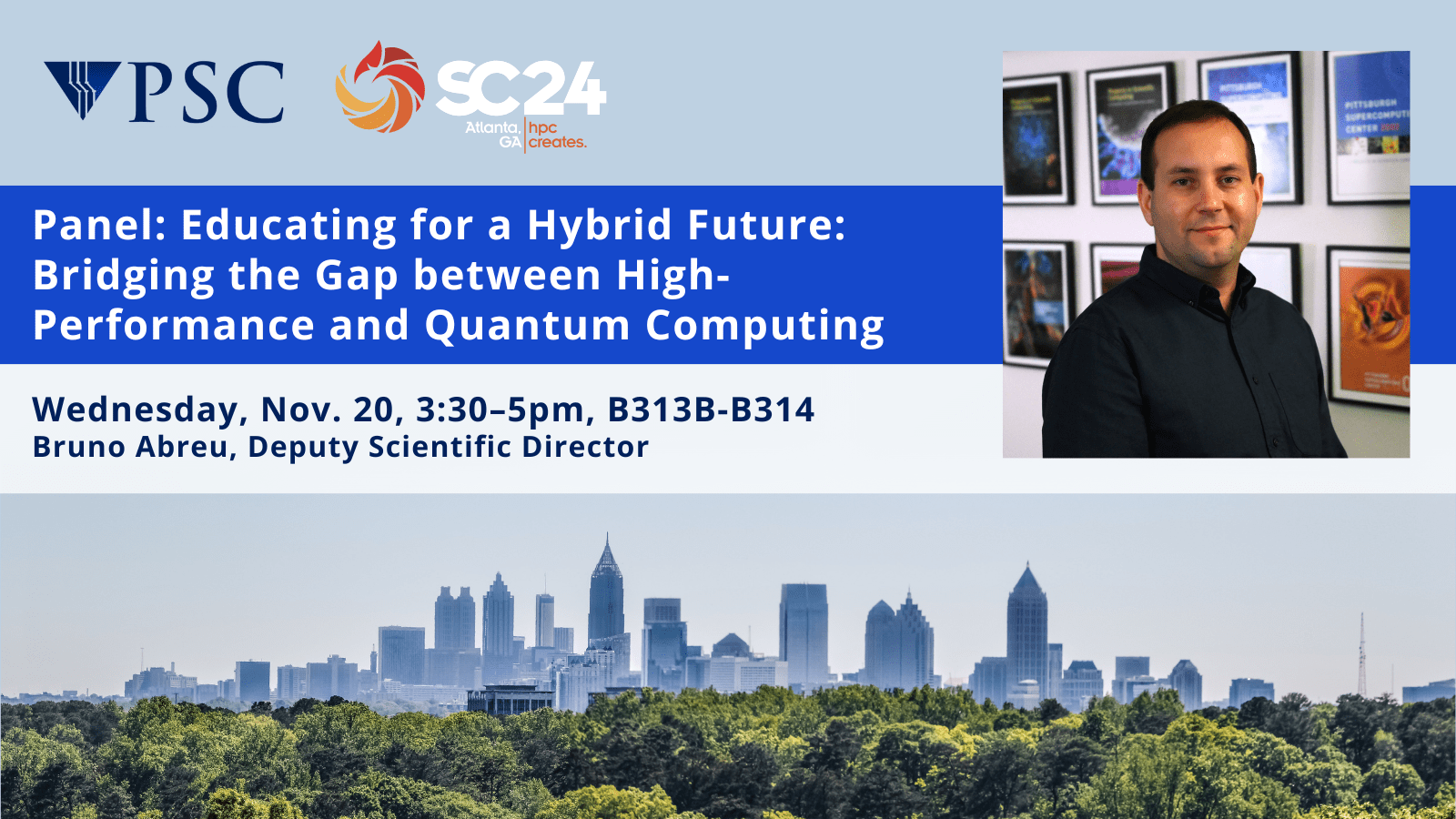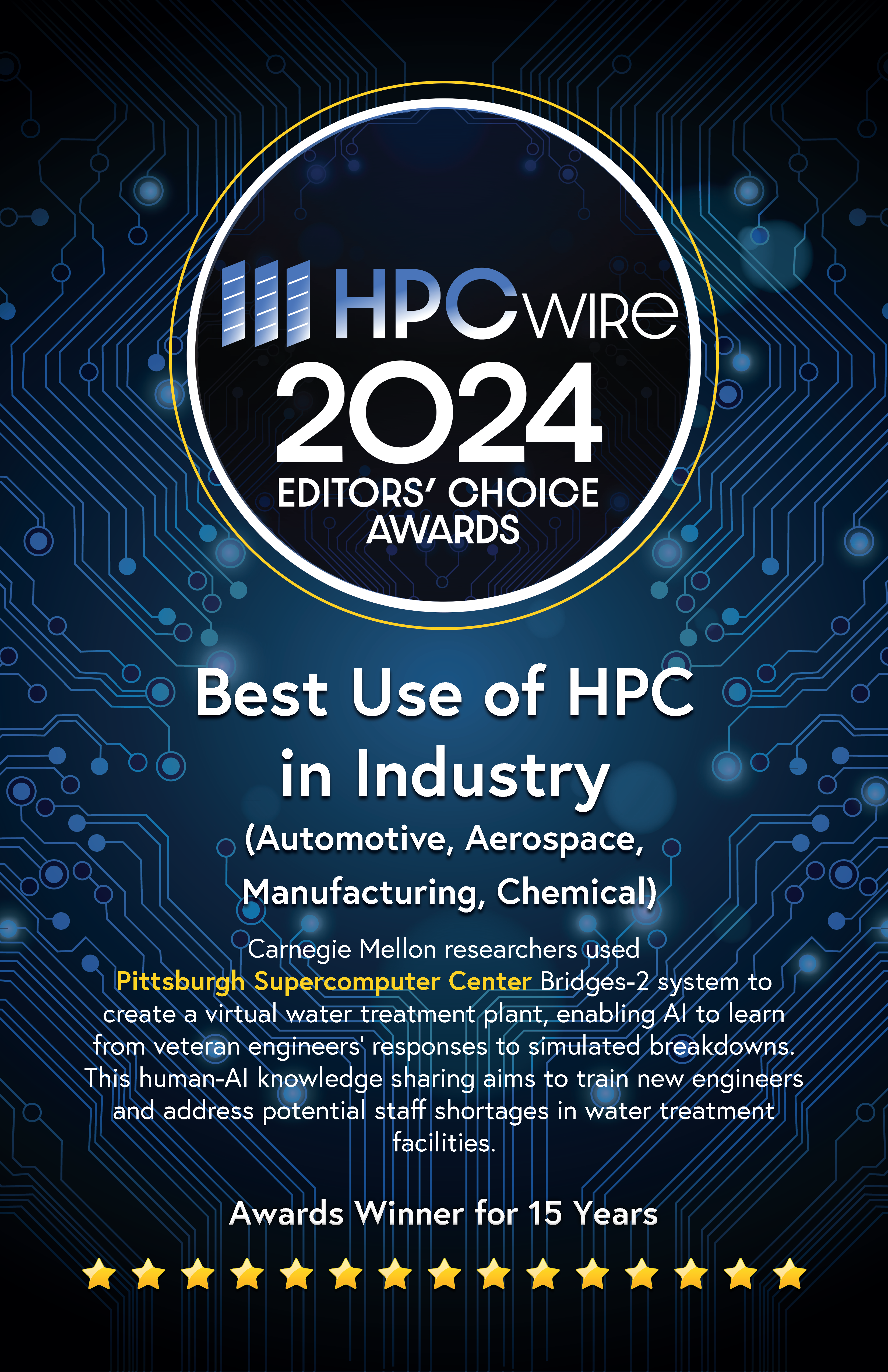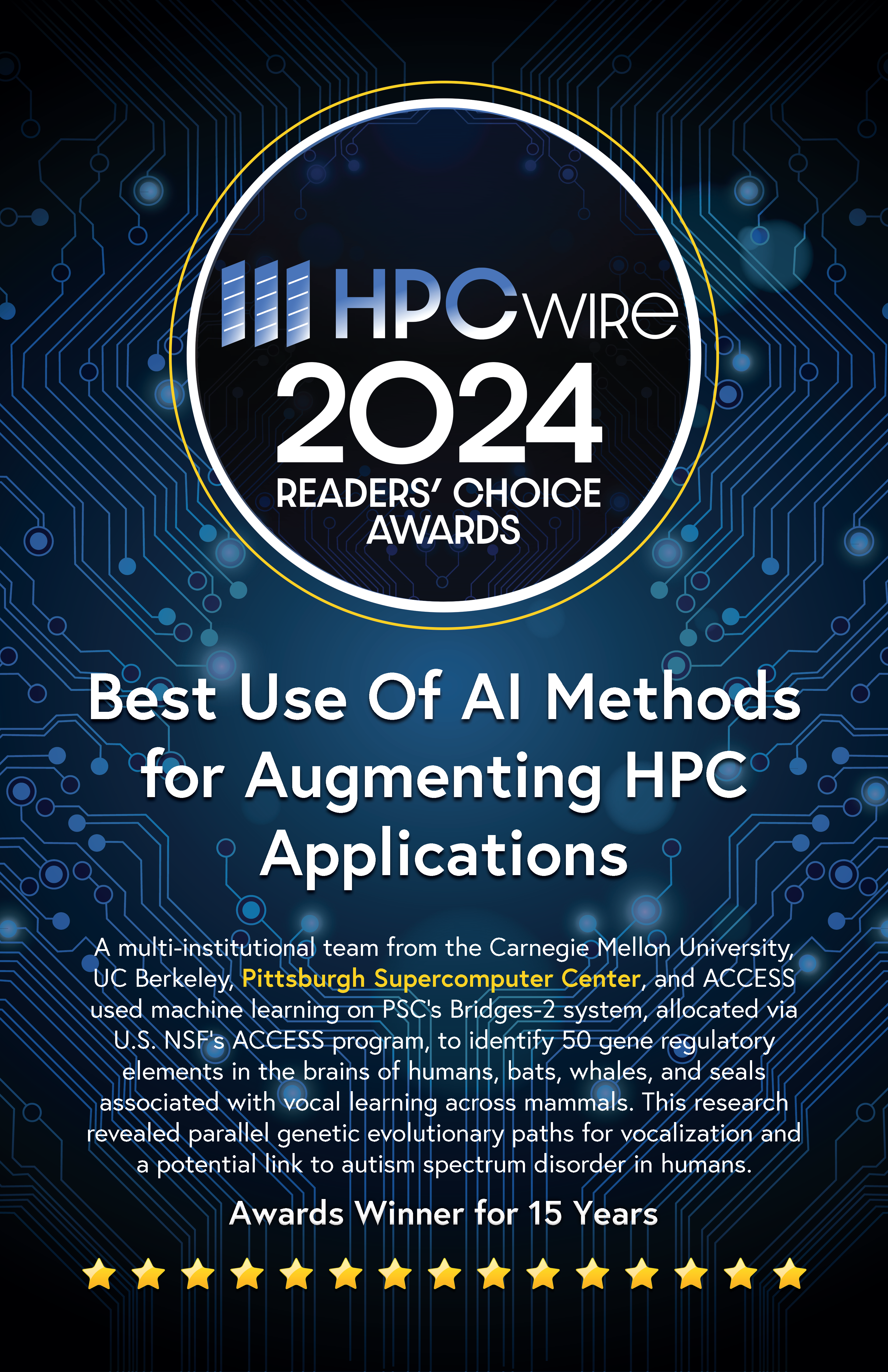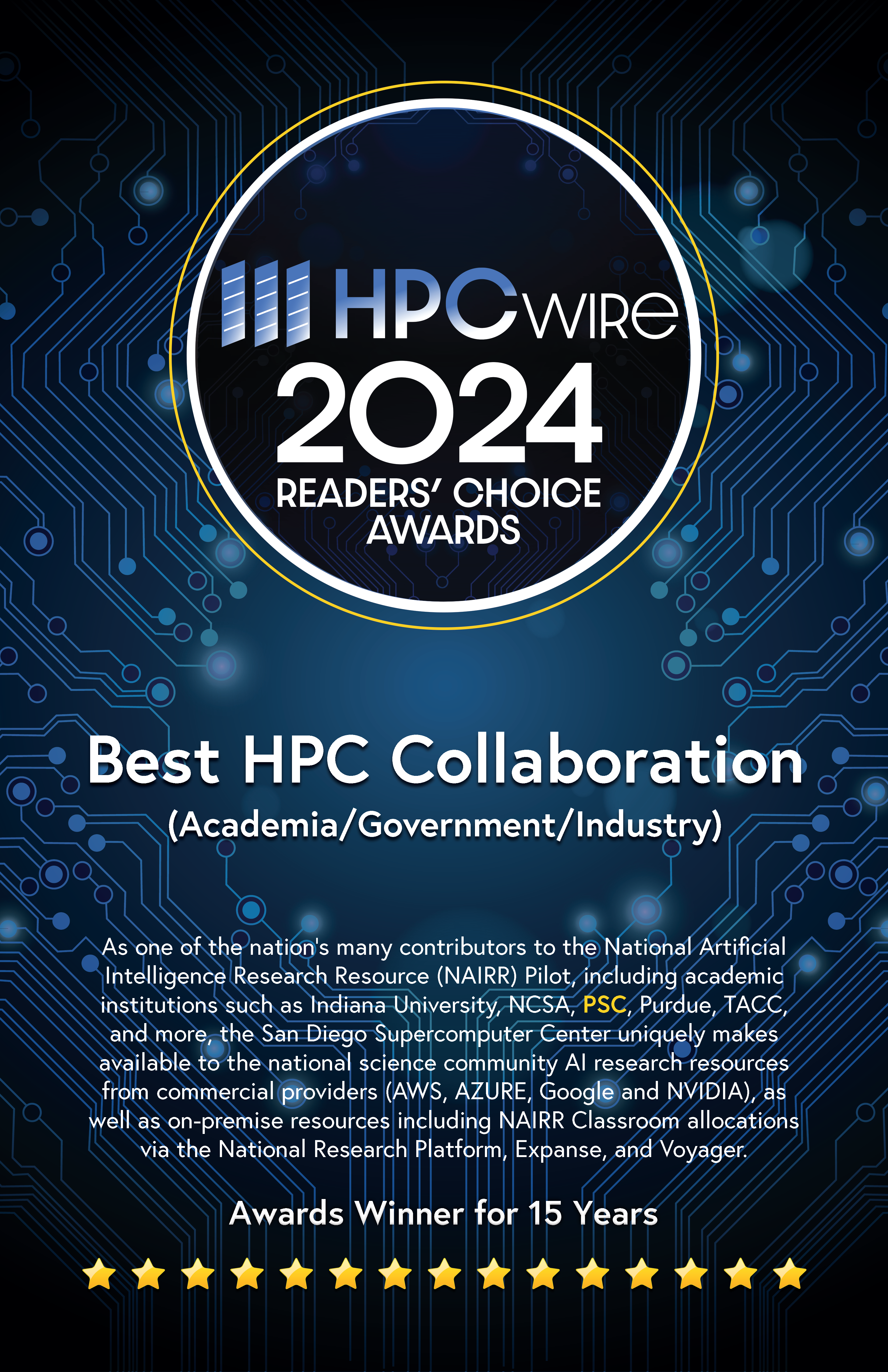
PSC @ Supercomputing 2024
November 17-22 | Atlanta, GA
Booth # 4023
We are excited to be in Atlanta for SC24! Our booth will have interactive demonstrations where you can explore how we use HPC to accelerate research.
PSC has been part of the national HPC community since 1986, and we are proud to continue our tradition of building relationships, fostering community, and of course, geeking out about research.
Kick Back at the PSC Backyard Party
Join us on Wednesday, November 20 from 4-6pm in Booth 4023 on the exhibit floor. Enjoy a drink, unwind, network—and maybe play some giant Jenga.
Research on Tap
Be sure to mark your calendars and join us for our special events.

HuBMAP Demo: The Human Biomolecular Atlas Program
Booth 4023
All Conference
- HuBMAP is an NIH Common Fund project that is working to create an open, global atlas of the human body at the cellular level to accelerate understanding of the relationships between cell and tissue organization and function and human health.
- We will be demonstrating the Exploration User Interface (EUI). With this tool, you can explore a 3D rendering of mapped organs and cells developed by HuBMAP researchers.
Learn about HPN-SSH
Location: Booth 4023
All Conference
- HPN-SSH is a free and open-source data movement tool based on SSH.
It allows for data transfer speeds up to 50x faster than SSH – speeds of 8Gbps are not uncommon. - HPN-SSH is free, fast, and secure and works with existing installs of SSH.
- We are in the process of creating an open-source ecosystem for HPN-SSH which would involve building a community of developers, researchers, and users of the tool.
- We are asking people to help us with our market research by completing short surveys about membership options and pricing, to help us gain a better understanding of how to best serve the HPN-SSH community and future members.
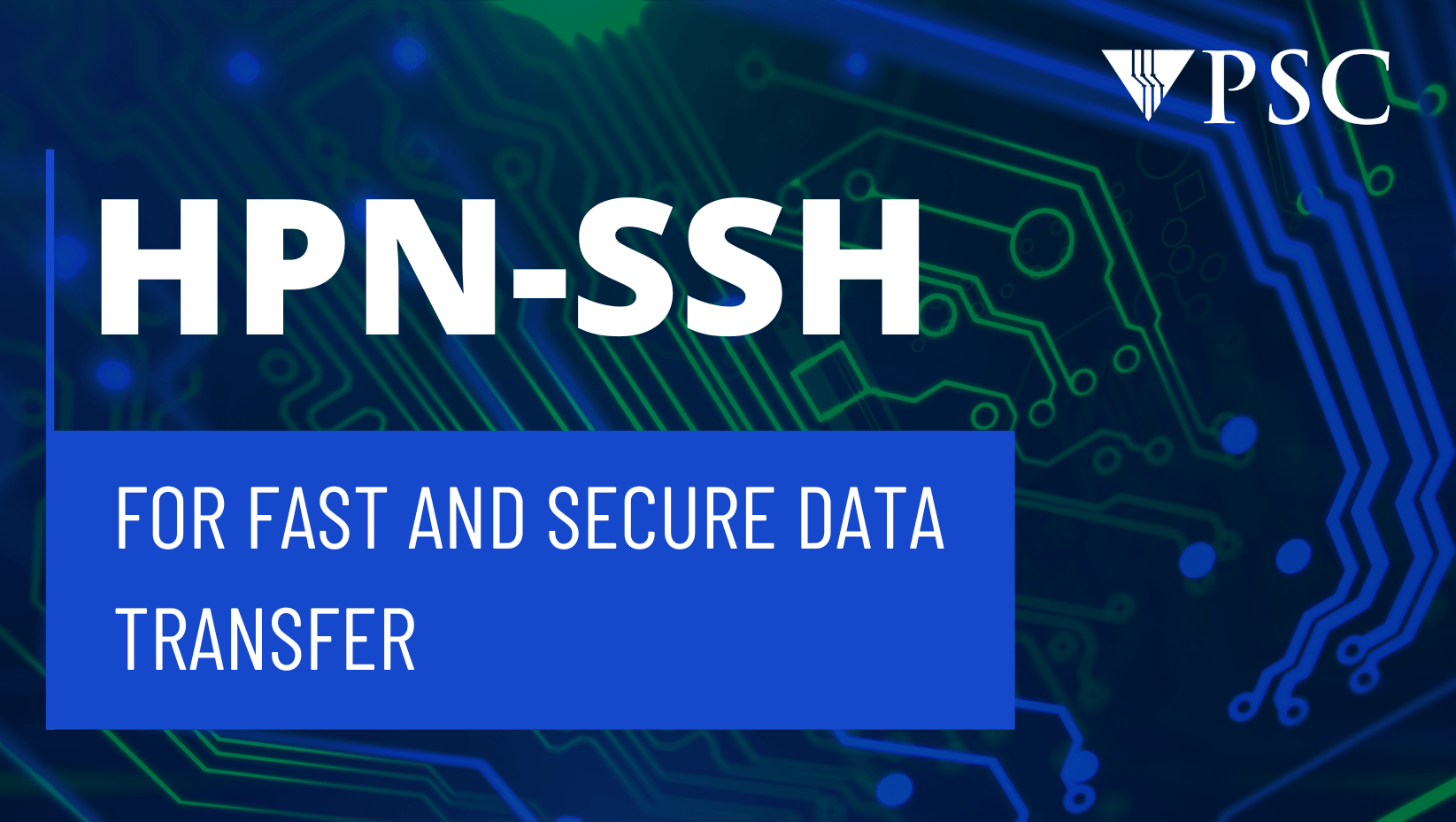
The Benchmark Beasts, PSC’s CMU+Pitt Team, Compete in the Indy Student Cluster Competition
Kickoff: 7:30pm, Monday Nov. 18
Conclusion: 5:00pm, Wednesday, Nov. 20
- Composed of students from three countries and various U.S. states, this pilot team for the Pittsburgh Supercomputing Center (PSC) is a special joint collaboration between Carnegie Mellon University and the University of Pittsburgh.
- During the first half of the summer, the team learned about parallel computing, Linux systems, commands, SLURM, SPACK, networking, and the history of parallel computing and Linux.
- For the second half of the summer, they used hardware donated by Lenovo to explore NAMD and ICON applications and examined cybersecurity aspects. The team is thrilled to continue its educational experience, overflowing with deep learning and laughter.
- Learn more about the competition.
Poster: Improvement of Bridges-2 Resource Utilization Through User Optimization
Location: B302-B305
Tuesday, Nov. 19, 12pm – 5pm EST
Jay Ashworth, Julian Uran, Michela Taufer, Paola Buitrago
This poster presents our two-phase solution for improving GPU utilization in NSF-funded ACCESS high-performance computing (HPC) clusters, with a pilot implementation on Pittsburgh Supercomputing Center’s Bridges-2. Our approach addresses the limitations of Open XdMoD, which lacks per-job GPU usage monitoring and experiences delays in data availability. In phase one, we develop a data ingestion layer to collect GPU indices and resource usage data, utilizing existing software tools for efficient data aggregation and analysis. Analyzing 5,717 completed GPU jobs revealed issues such as workflow configuration errors, framework misconfigurations, and low GPU utilization. In phase two we create a user-facing platform with modern web tools. This platform will automatically detect inefficiencies, notify users via email, and provide actionable insights to optimize resource management. By addressing these issues and integrating real-time data presentation, we aim to enhance overall system utilization, reduce GPU job wait times, and enable more efficient use of existing resources. Learn more.
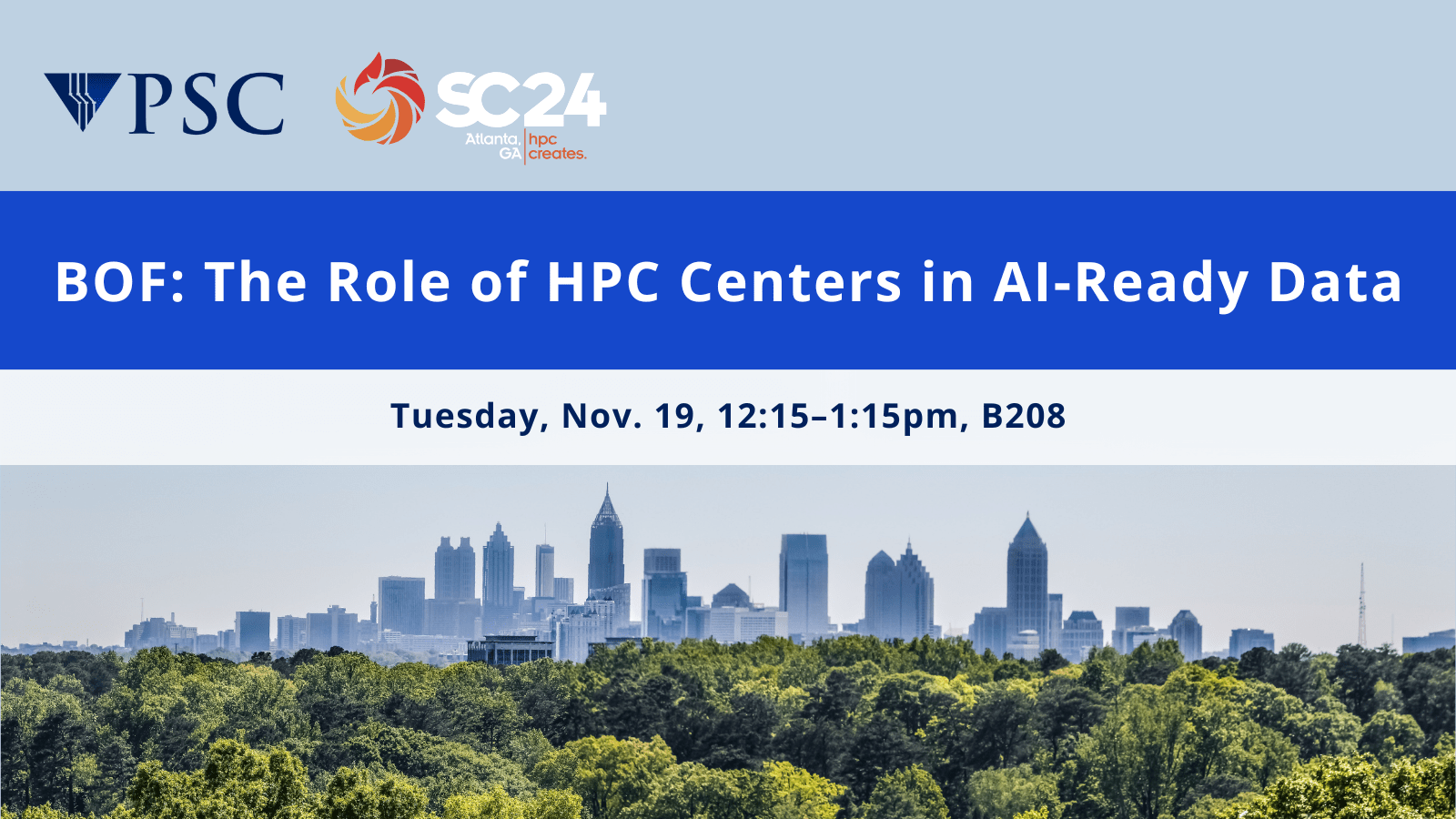
BOF: The Role of HPC Centers in AI-Ready Data
Location: B208
Tuesday, Nov. 19, 12:15pm – 1:15pm
Artificial intelligence (AI), including machine learning, is increasingly contributing to most areas of scholarship. The AI lifecycle includes gathering and preparing data, selecting a method, training a model (creating and evaluating it), validating and using it, and storing and sharing it for reproducibility and reuse, all in the context of scholarly goals and ethics, privacy, and fairness. HPC centers have a key role to play in terms of the data, the models, and the tasks. This BoF will bring together HPC center staff and users to discuss how centers support AI today and how they might in the future. Learn more.
Panel: Educating for a Hybrid Future: Bridging the Gap between High-Performance and Quantum Computing
Location: B313B-B314
Wednesday, Nov. 20, 3:30pm – 5pm EST
Bruno Abreu
This panel brings together experts from leading supercomputing centers and the quantum computing industry to address the integration of QC into educational frameworks worldwide. The goal is to explore the dynamic interface between QC and HPC education, focusing on evolving user needs, necessary support systems, and innovative strategies to broaden participation in this emerging field. Through interactive discussions, the panel will explore the educational infrastructure and collaborative initiatives essential to cultivating a competent workforce adept at exploiting the capabilities of quantum computing. Learn more.
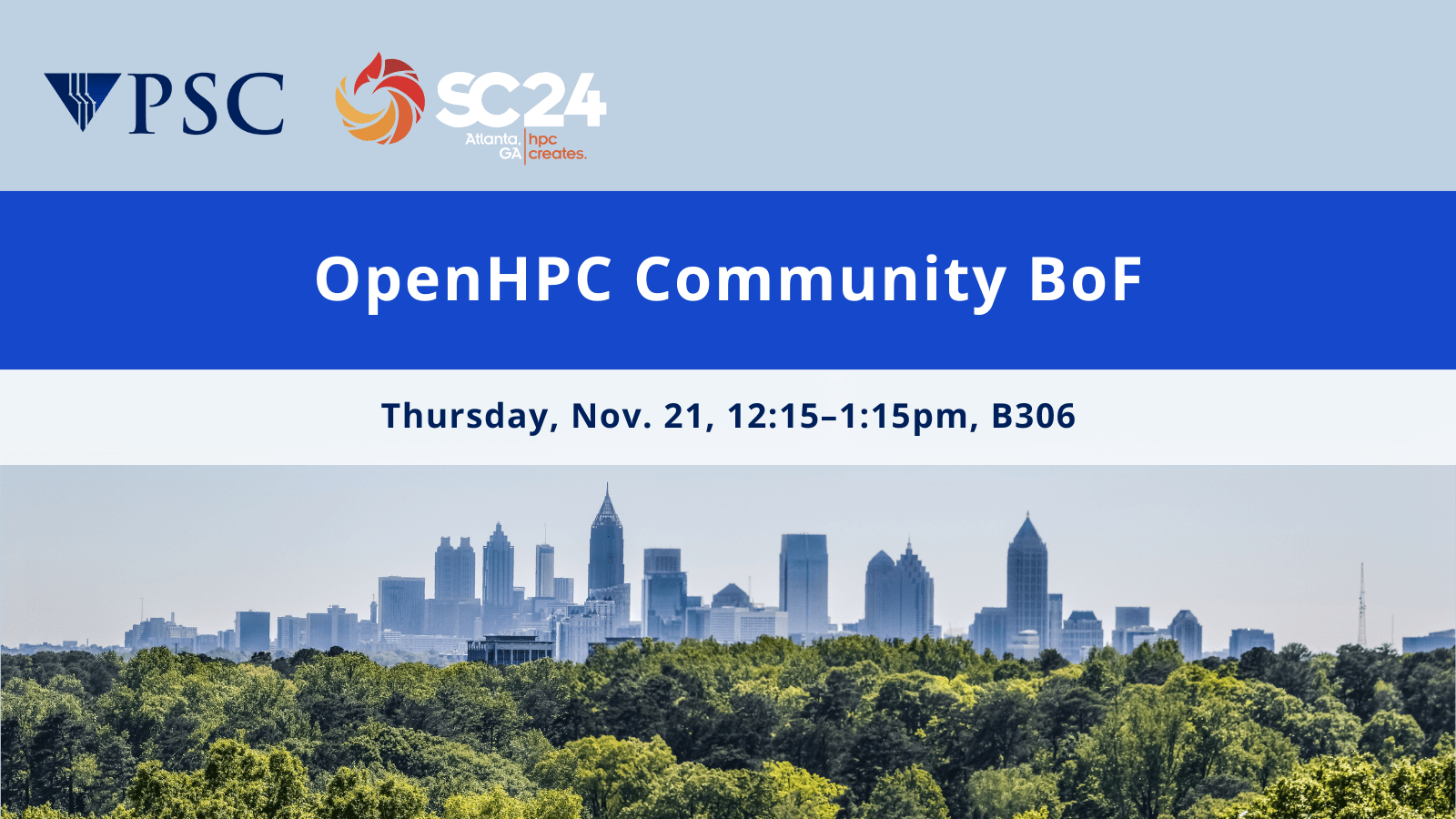
OpenHPC Community BoF
Location: B306
Thursday, Nov. 21, 12:15pm – 1:15pm
OpenHPC provides an open-source, community-driven stack of common ingredients to deploy and manage Linux-based HPC clusters. Formed in November 2015 and formalized as a Linux Foundation project in June 2016, OpenHPC continues to see rapid growth in adoption. It is used by thousands of organizations worldwide, including academic institutes, non-profit organizations, government labs, and commercial entities. At this BOF, speakers from the Technical Steering Committee will provide technical updates and near-term roadmaps. We then invite open discussion, allowing attendees to provide feedback on OpenHPC conventions and packaging, request additional components and configurations, and discuss future trends. Learn more.
PSC receives four HPCwire 2024 Awards!
PSC has been recognized in the annual HPCwire Readers’ and Editors’ Choice Awards, presented at the 2024 International Conference for High Performance Computing, Networking, Storage, and Analysis (SC24), in Atlanta, Georgia.
Editors’ Choice: Best Use of HPC in Industry (Automotive, Aerospace, Manufacturing, Chemical, etc.)
Carnegie Mellon researchers used PSC‘s Bridges-2 system to create a virtual water treatment plant, enabling AI to learn from veteran engineers’ responses to simulated breakdowns. This human-AI knowledge sharing aims to train new engineers and address potential staff shortages in water treatment facilities. Read more.
Readers’ Choice: Best Use Of AI Methods for Augmenting HPC Applications
A multi-institutional team from UC Berkeley, PSC, and ACCESS used machine learning on PSC’s Bridges-2 system to identify 50 gene regulatory elements in the brains of humans, bats, whales, and seals associated with vocal learning across mammals. This research revealed parallel genetic evolutionary paths for vocalization and a potential link to autism spectrum disorder in humans. Read more.
Readers’ Choice: Best HPC Collaboration
As one of the nation’s many contributors to the National Artificial Intelligence Research Resource (NAIRR) Pilot, including academic institutions such as Indiana University, NCSA, PSC, Purdue, TACC, and more, the San Diego Supercomputer Center uniquely makes available to the national science community AI research resources from commercial providers (AWS, AZURE, Google and NVIDIA), as well as on-premise resources including NAIRR Classroom allocations via the National Research Platform, Expanse, and Voyager. Read more. Read more.
Editors’ Choice: Best Use Of AI Methods for Augmenting HPC Applications
Researchers from Carnegie Mellon and the University of British Colombia used AI and HPC to identify potential inhibitors for LRRK2, the primary genetic cause of familial Parkinson’s disease. Using computing resources at the Pittsburgh Supercomputing Center and the San Diego Supercomputer Center, their method narrowed 4.5 billion molecules to 14 promising candidates, potentially accelerating drug discovery for the disease affecting over 500,000 Americans.
About PSC
Pittsburgh Supercomputing Center is a joint computational research center with Carnegie Mellon University and the University of Pittsburgh. Our mission is to enable the advancement of science and research. We cultivate collaborative partnerships, empower the next generation of researchers, and provide cutting-edge cyberinfrastructure.
Apply to join our team today!
Join our team and help advance state of the art high performance computing, communications, and data analytics.
Pittsburgh Supercomputing Center (PSC) is a joint effort of Carnegie Mellon University and the University of Pittsburgh. PSC is located minutes from the heart of Pittsburgh, surrounded by culture and education.

